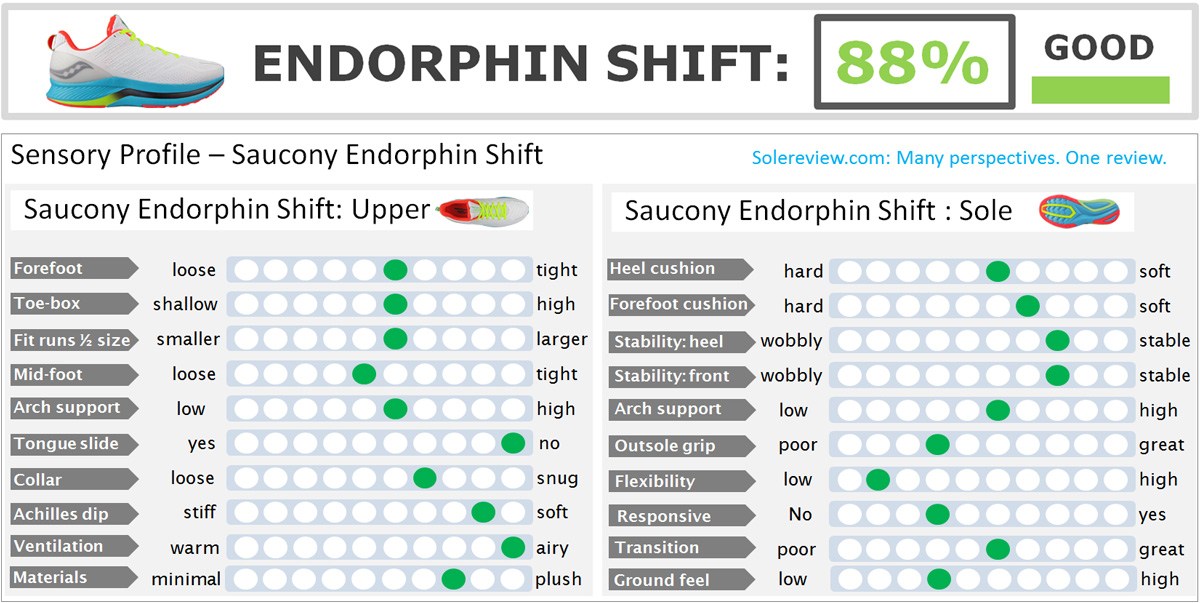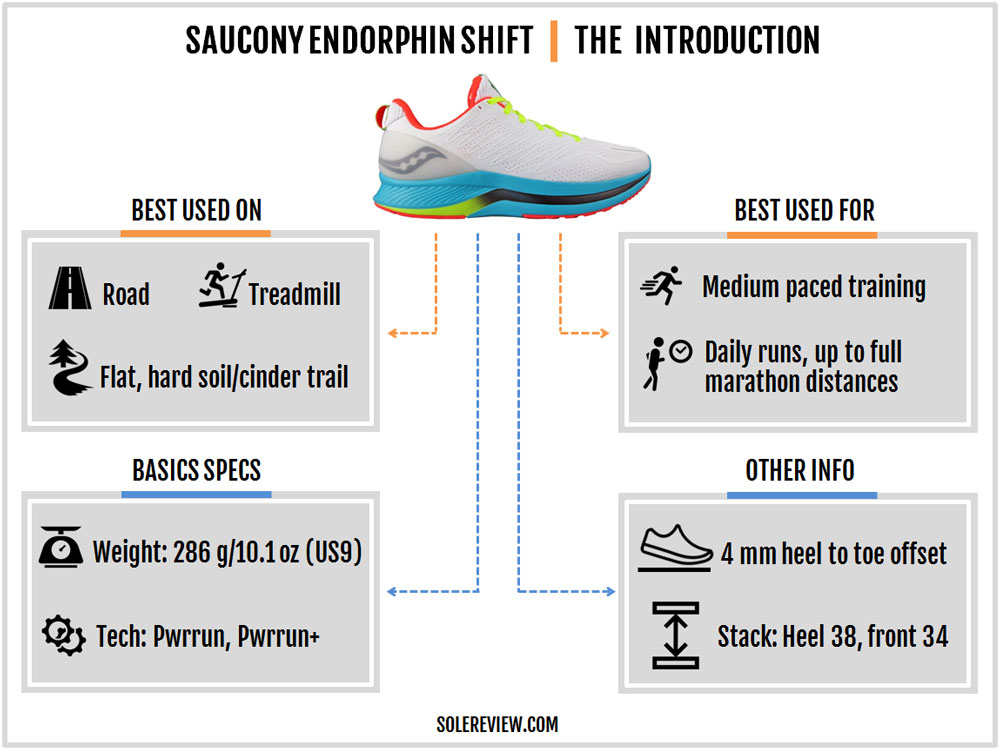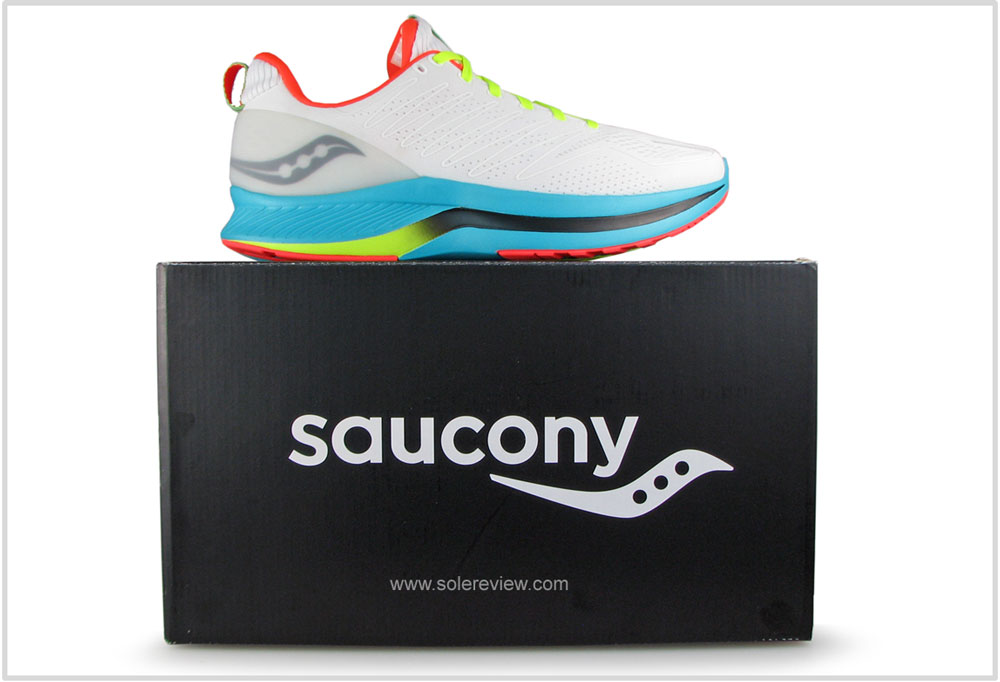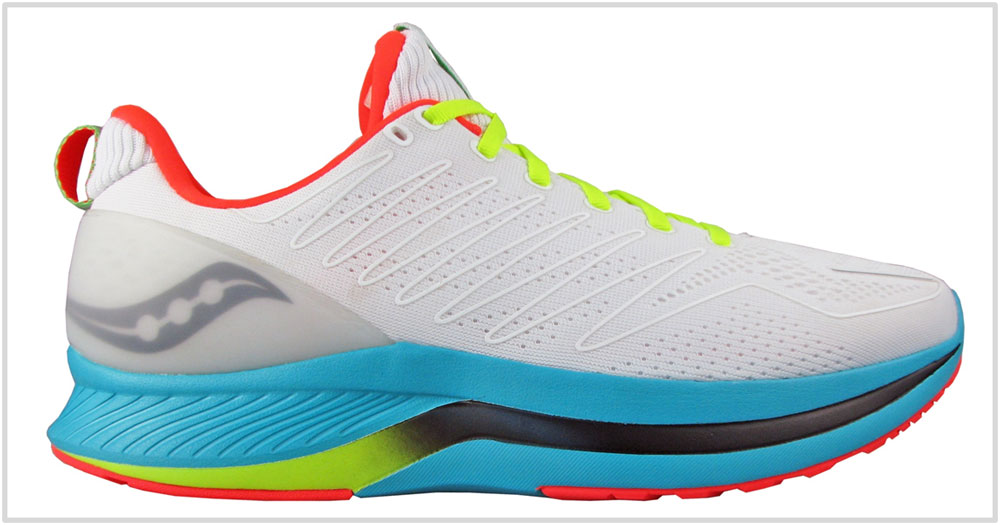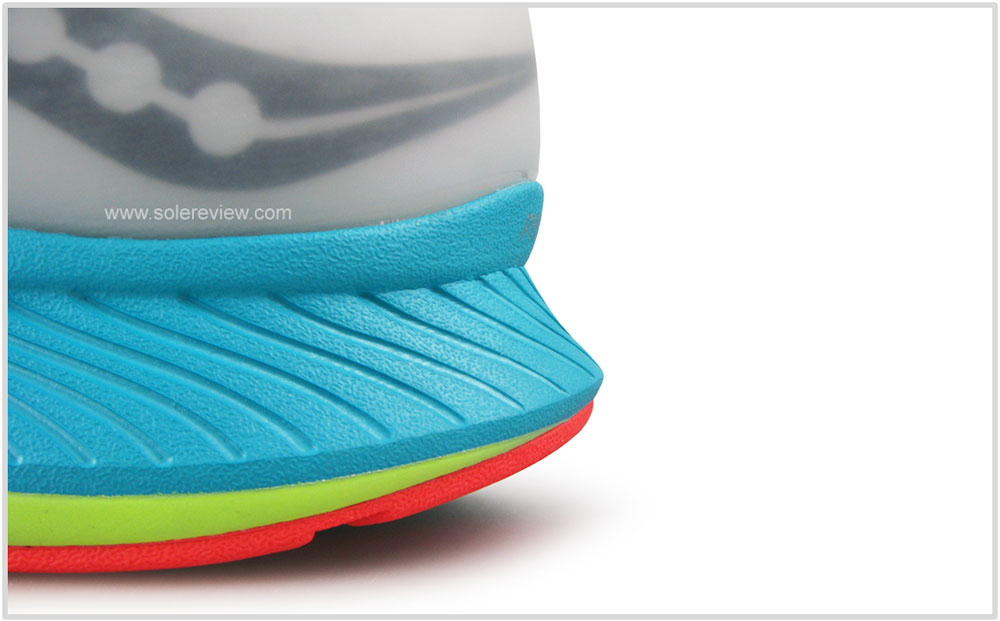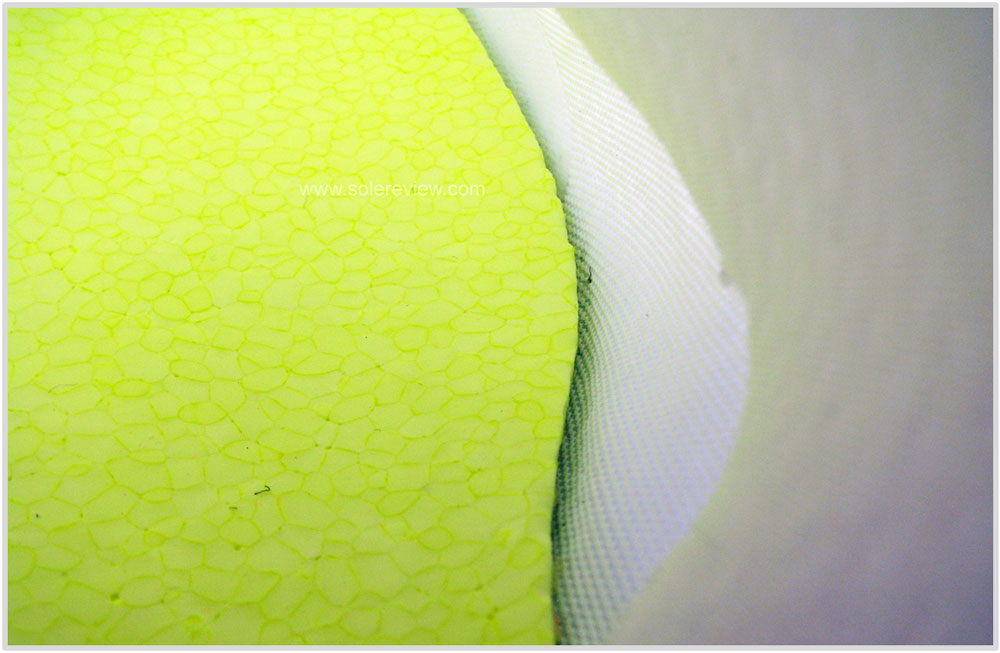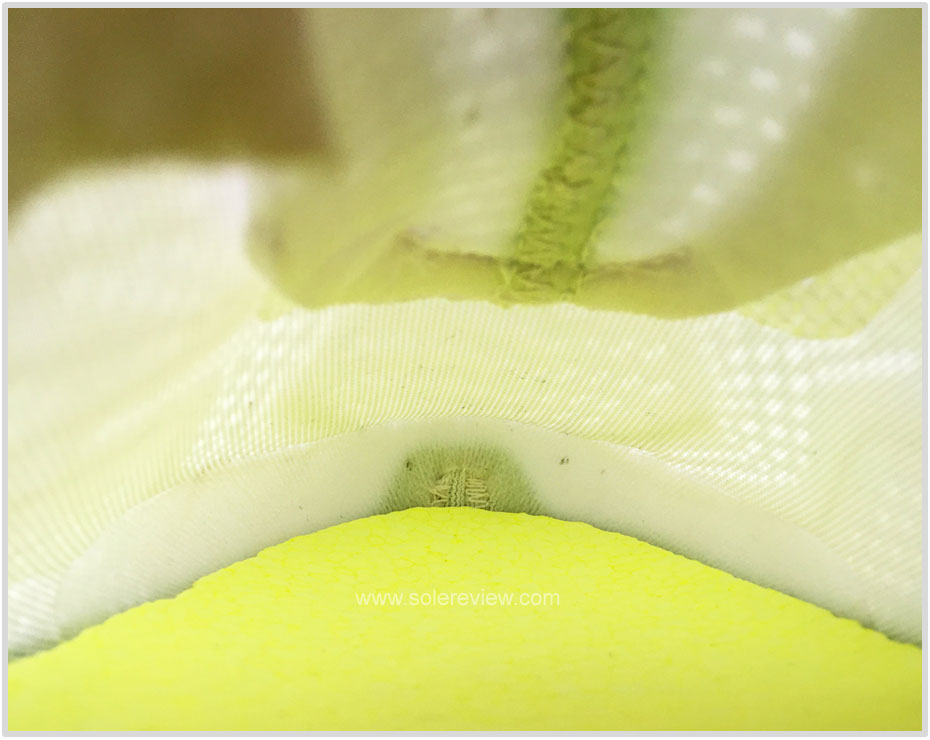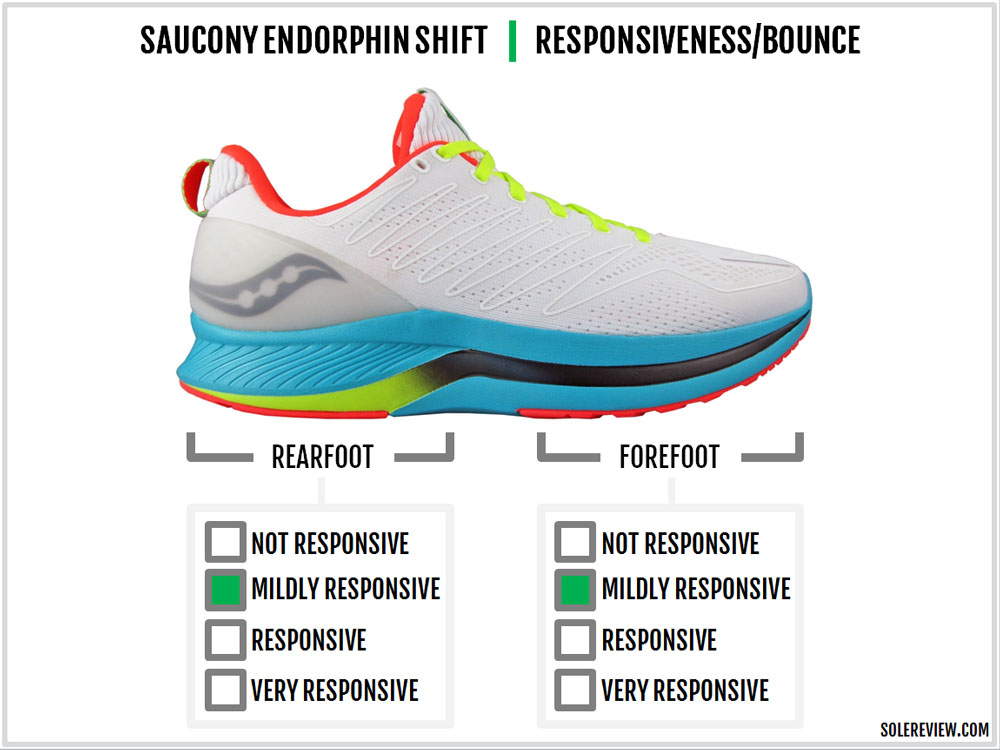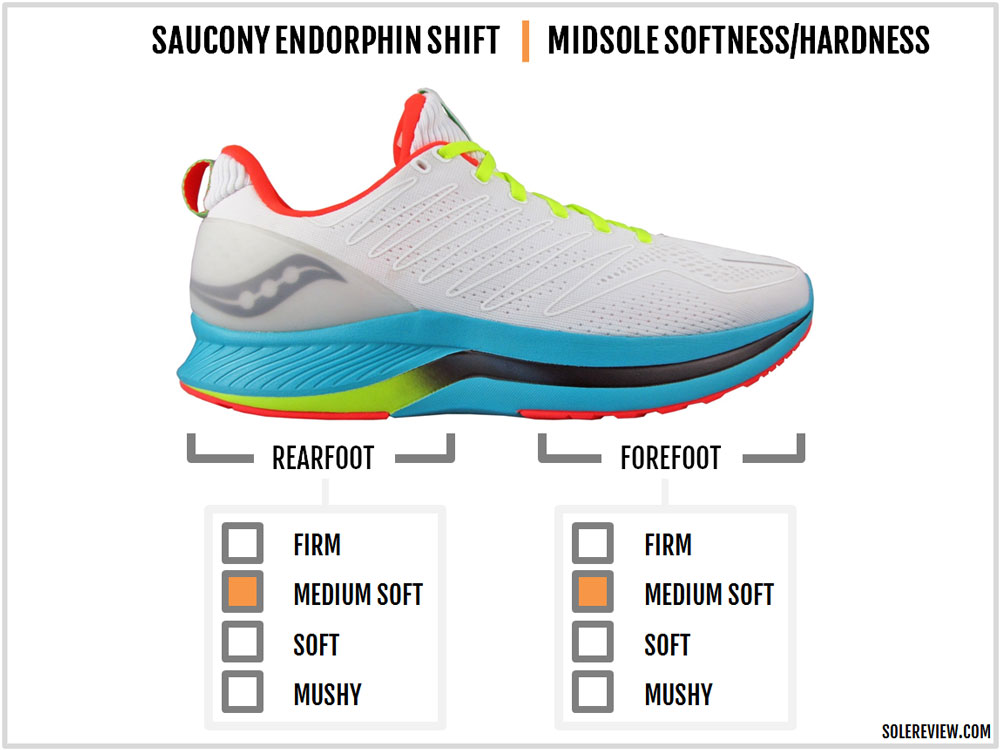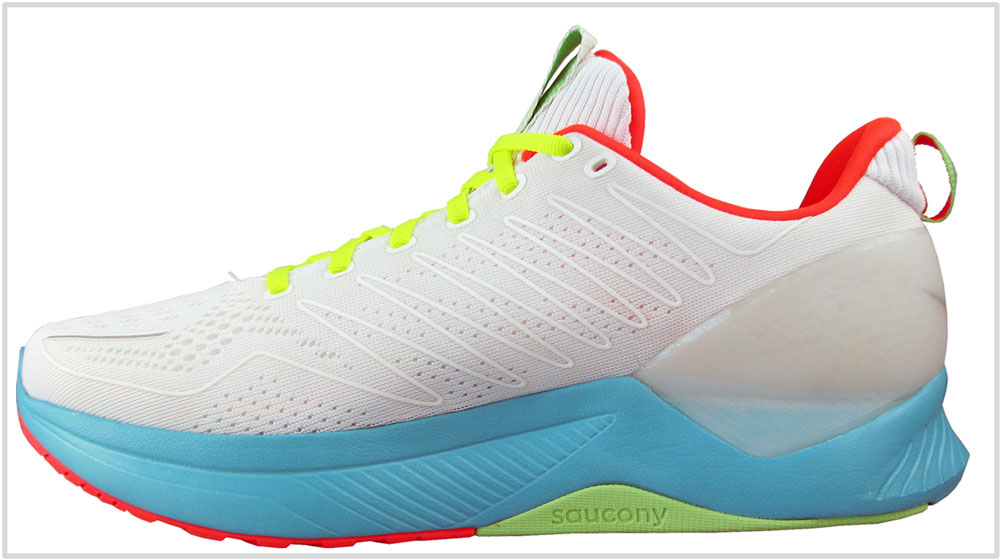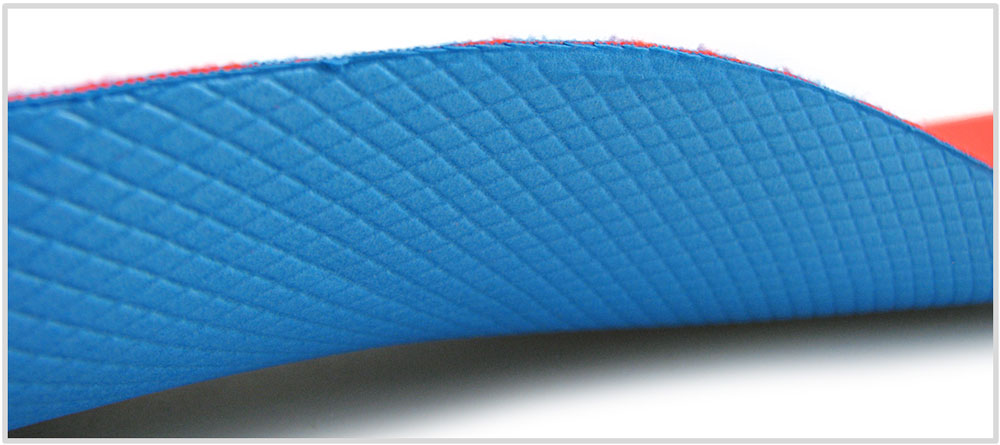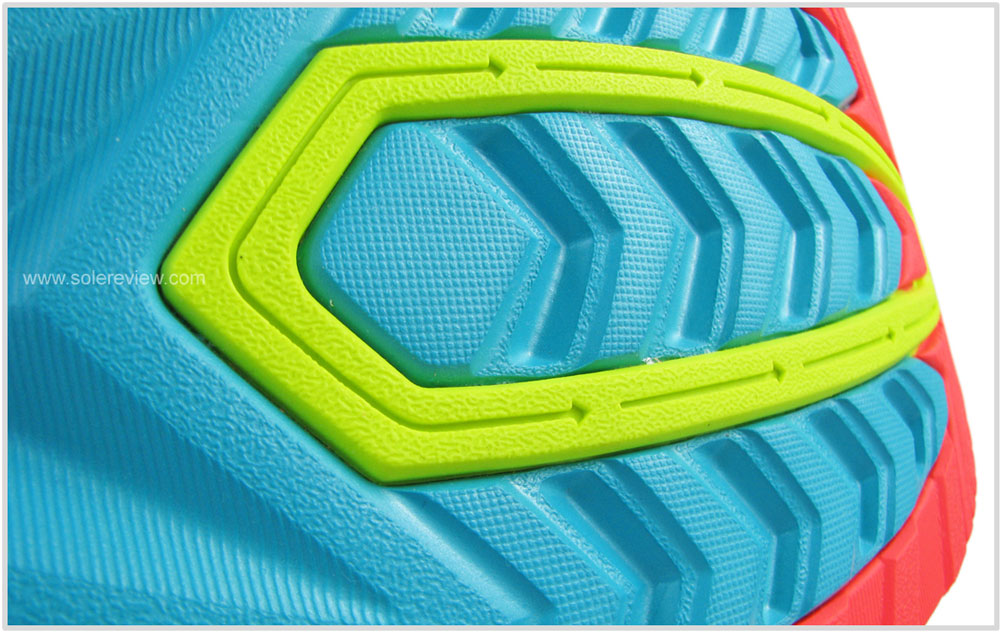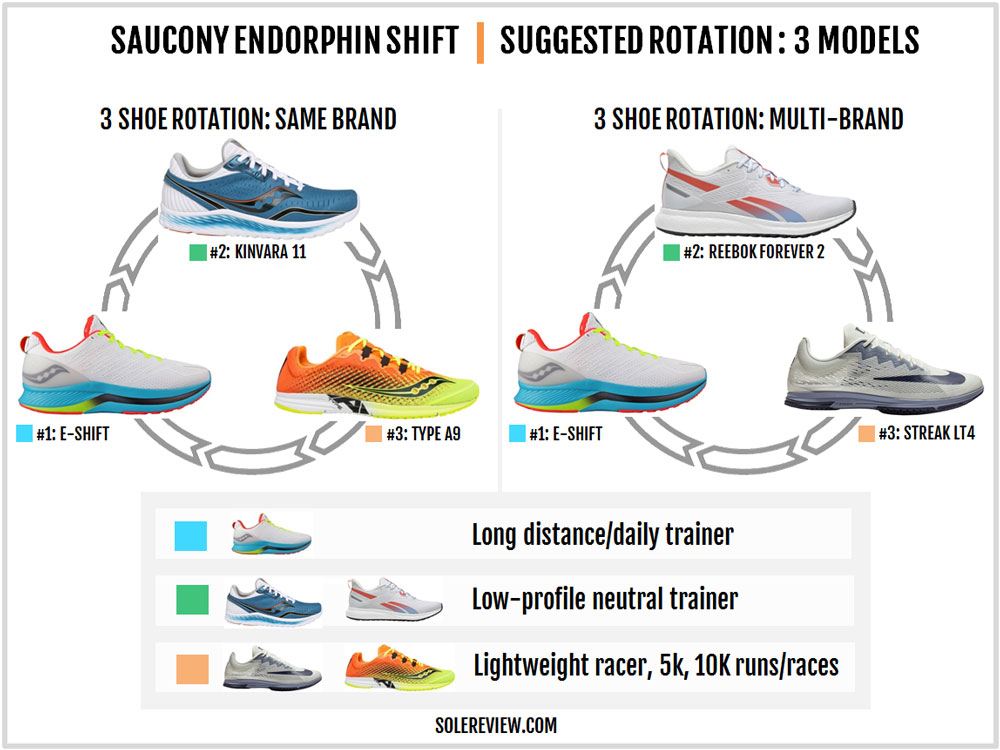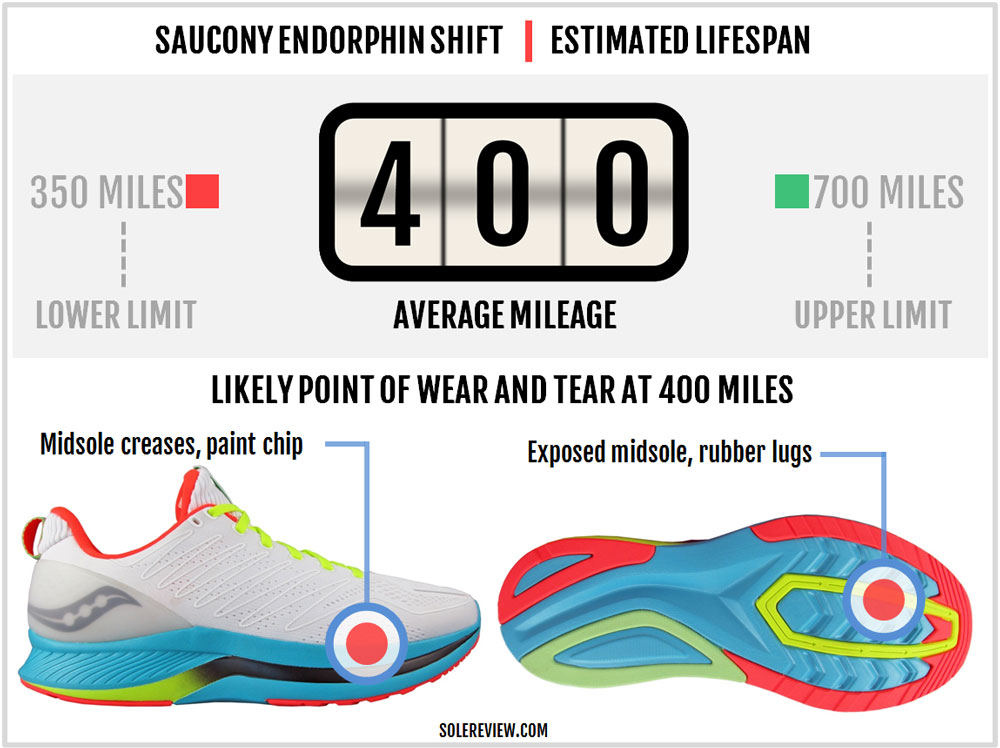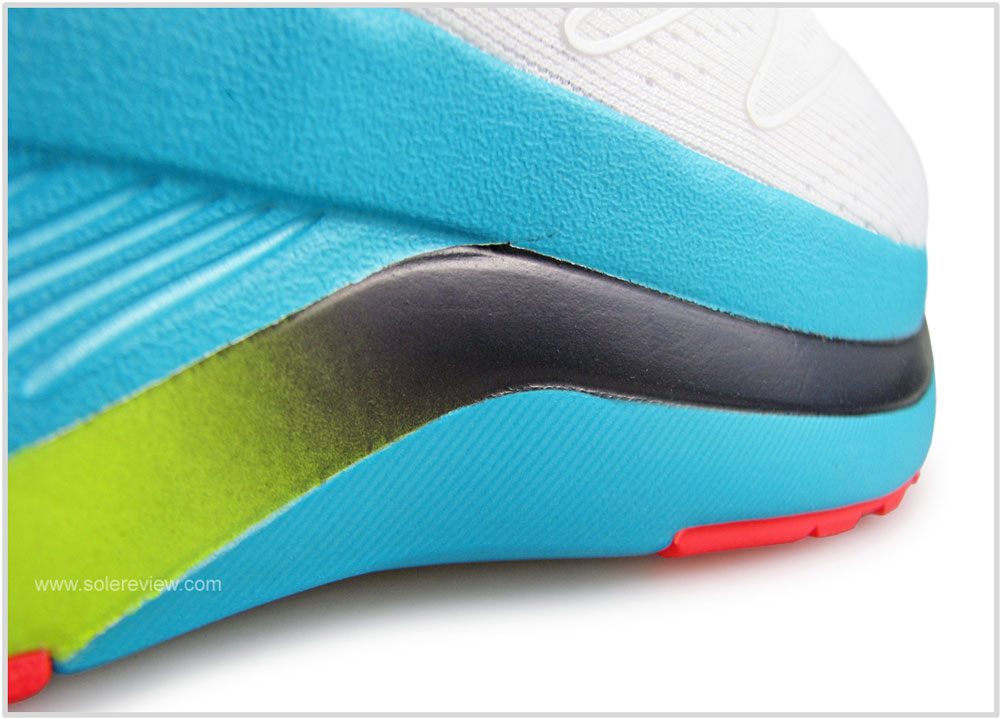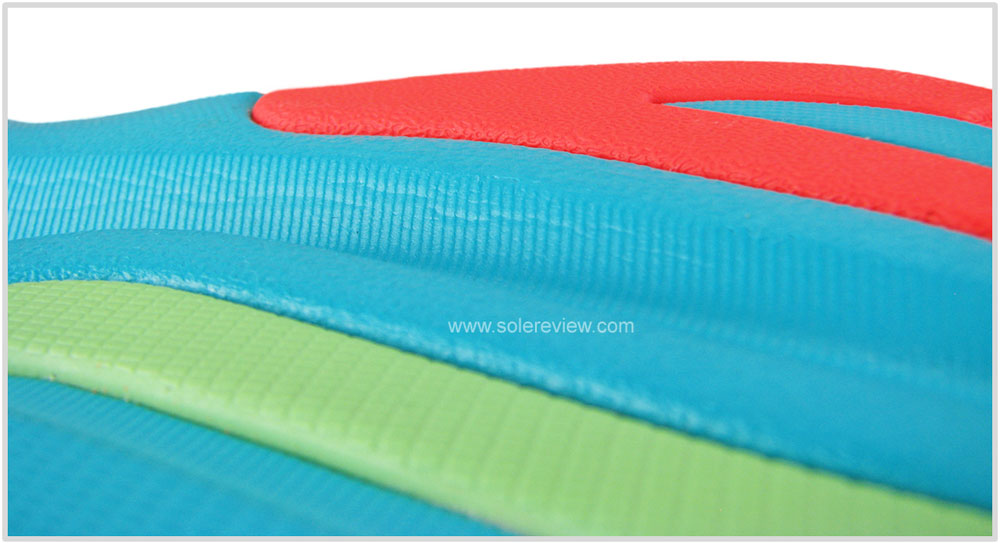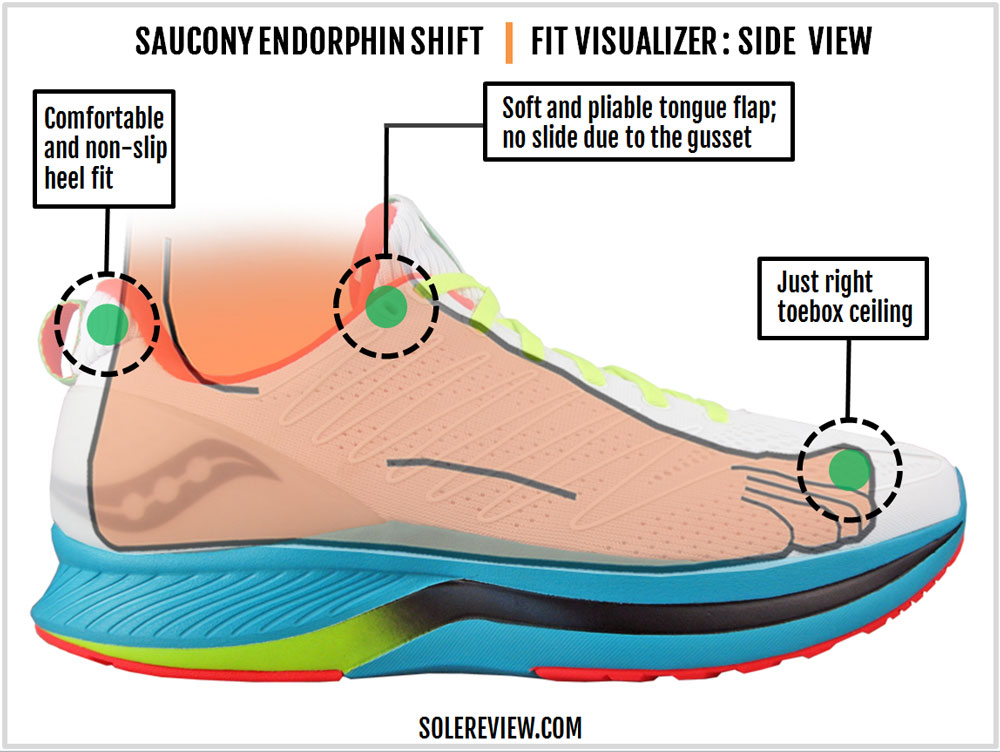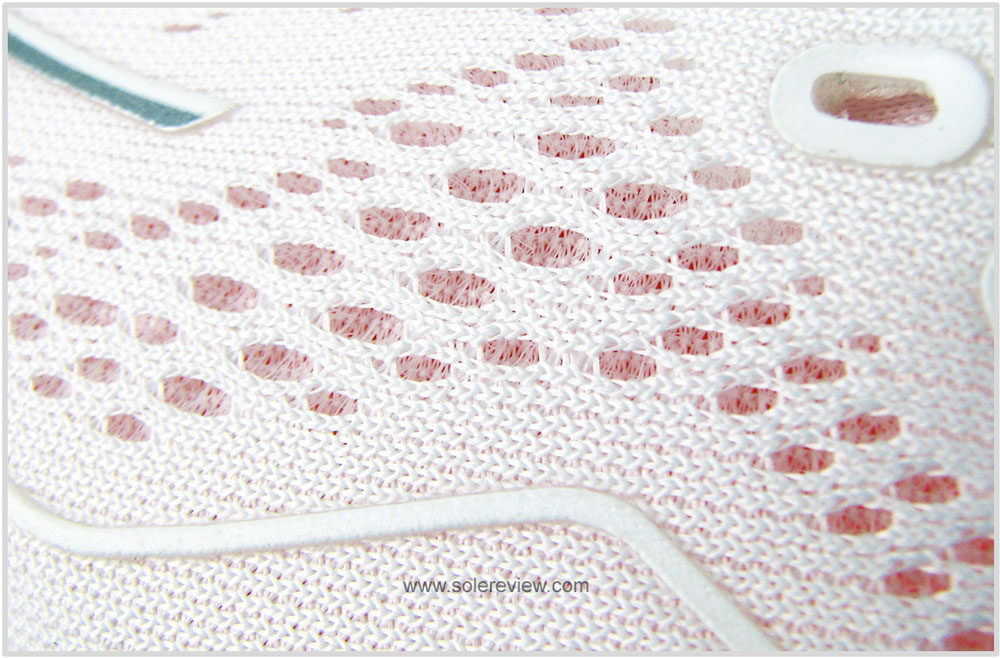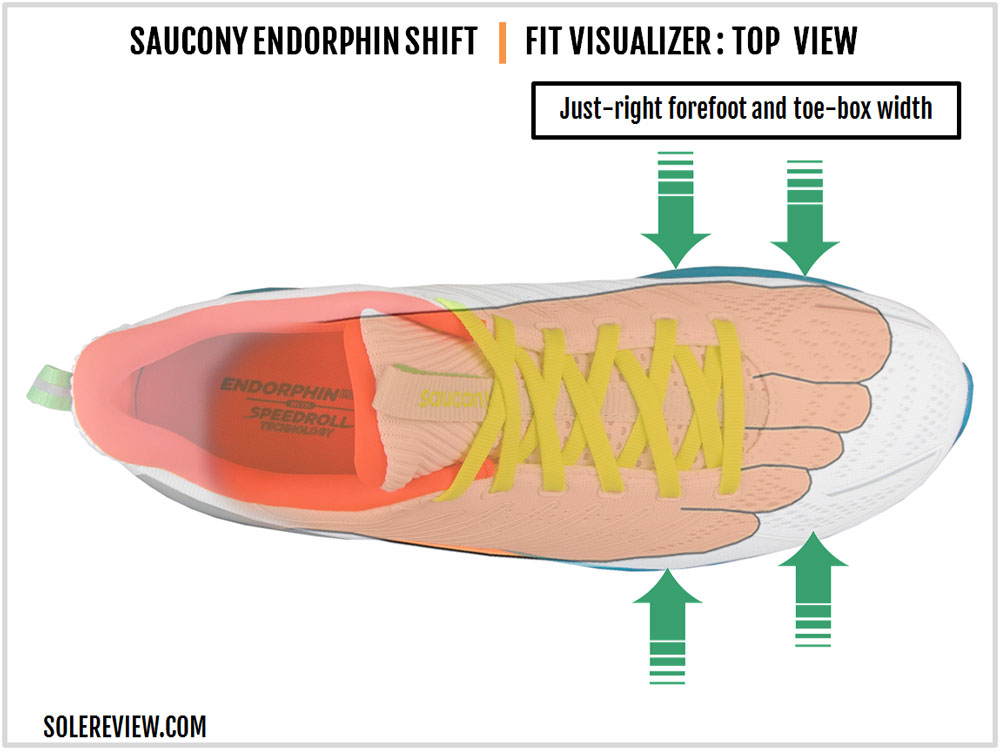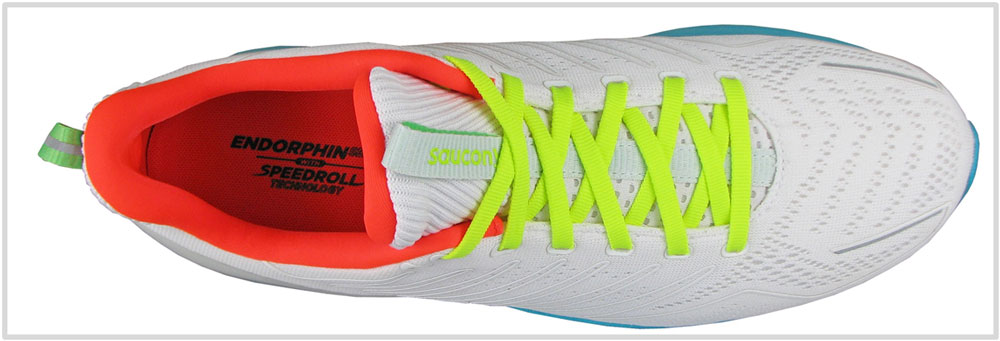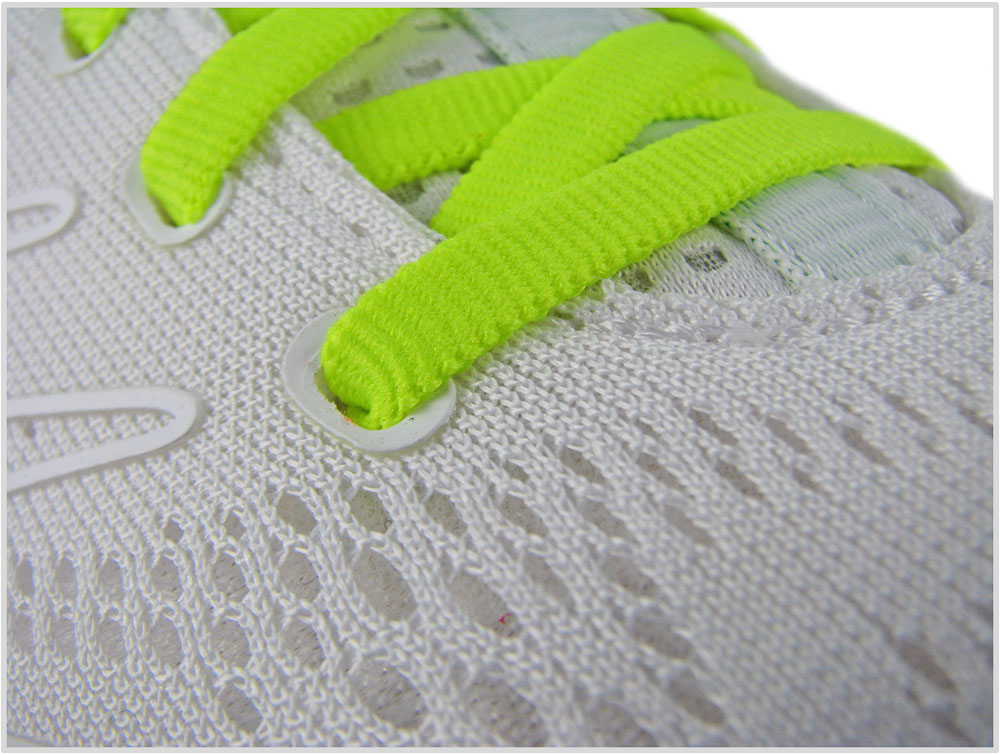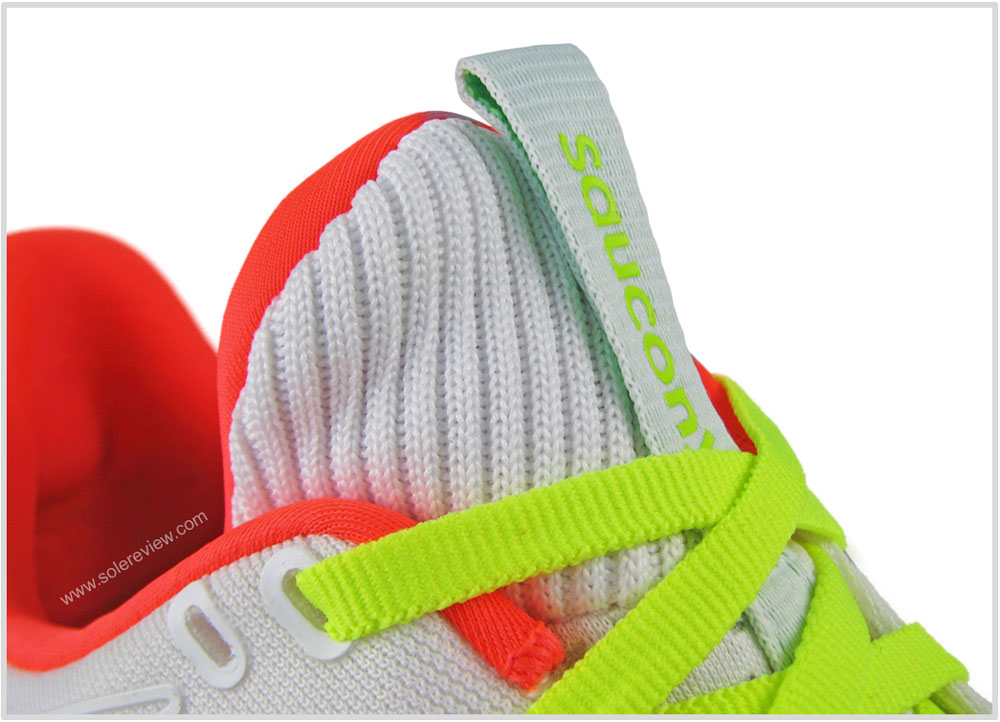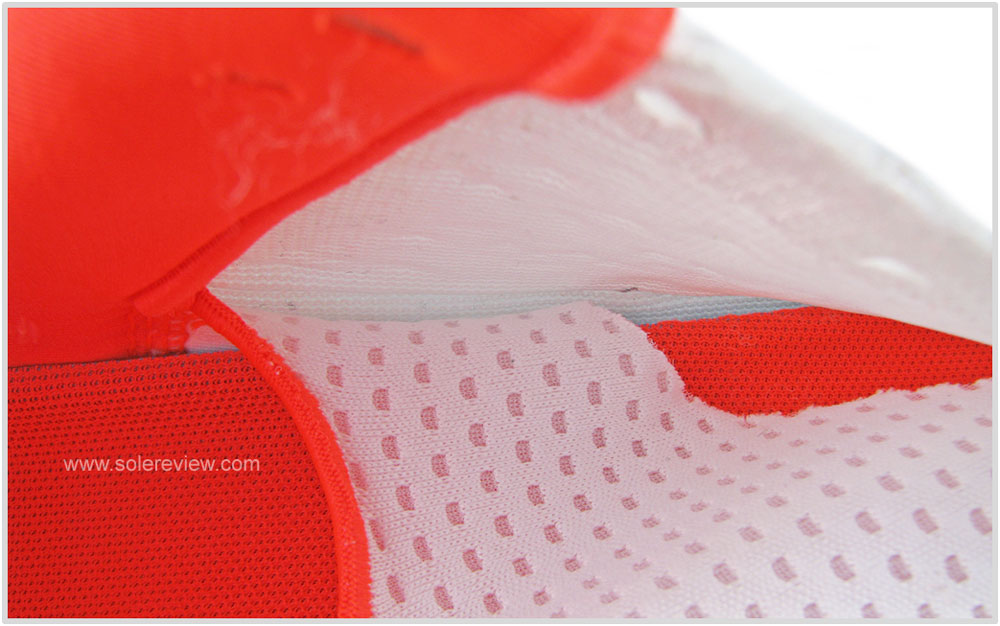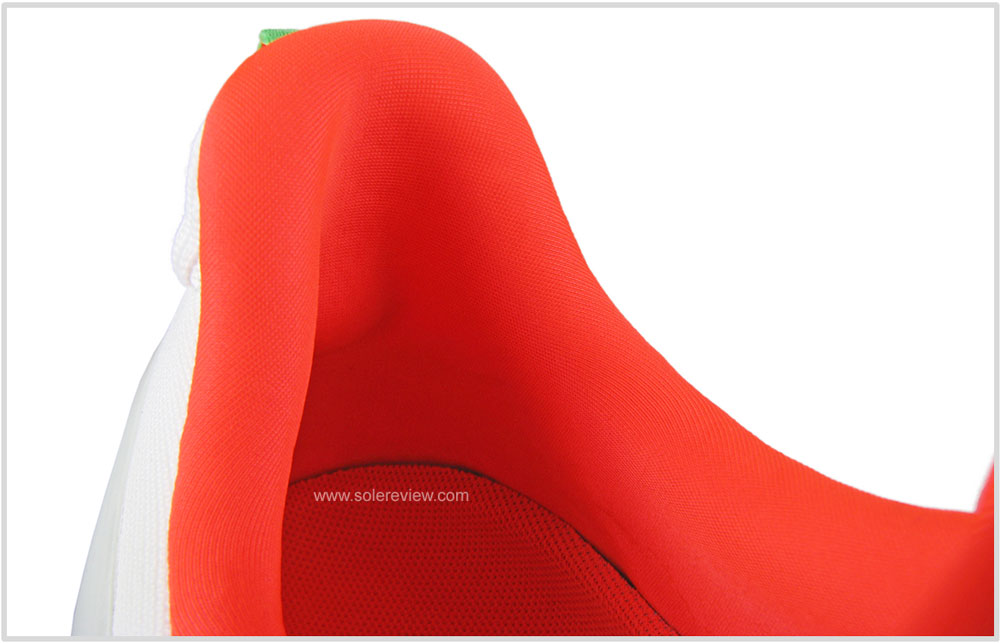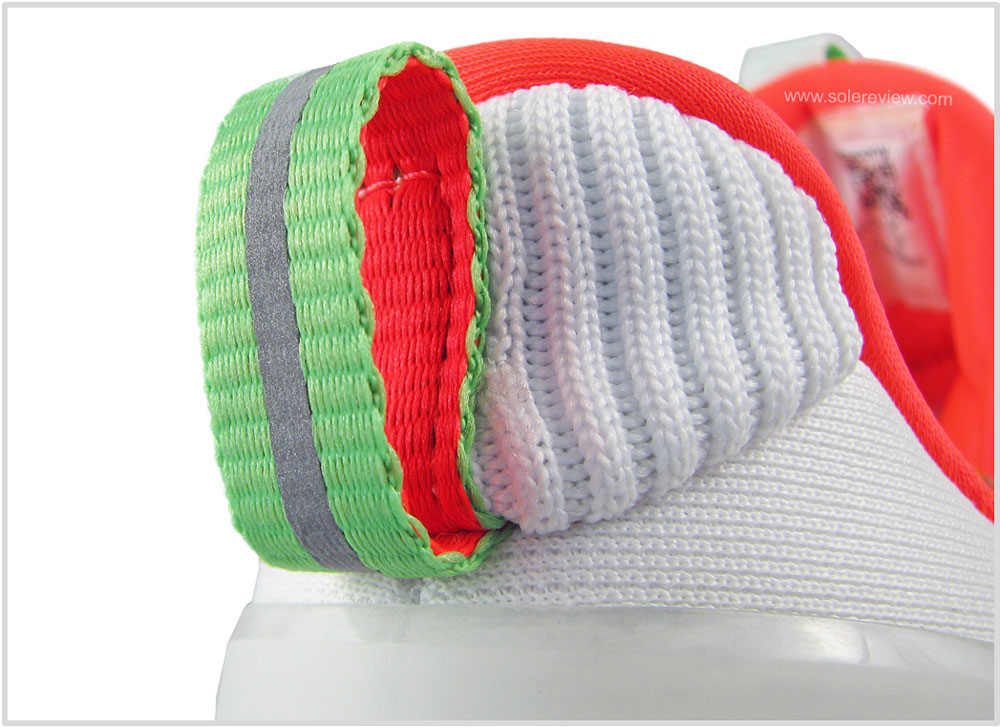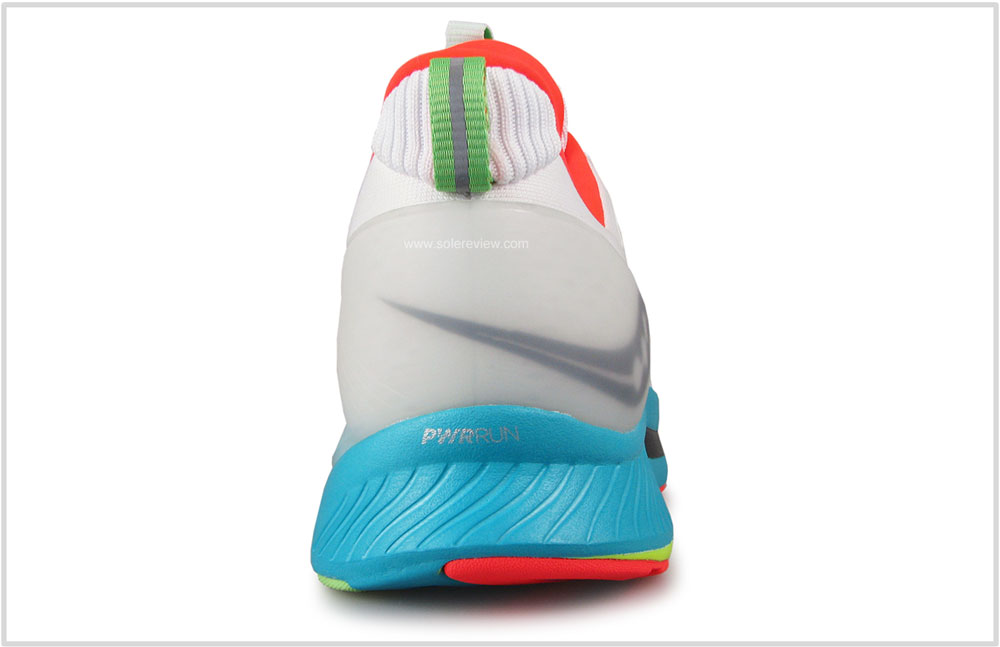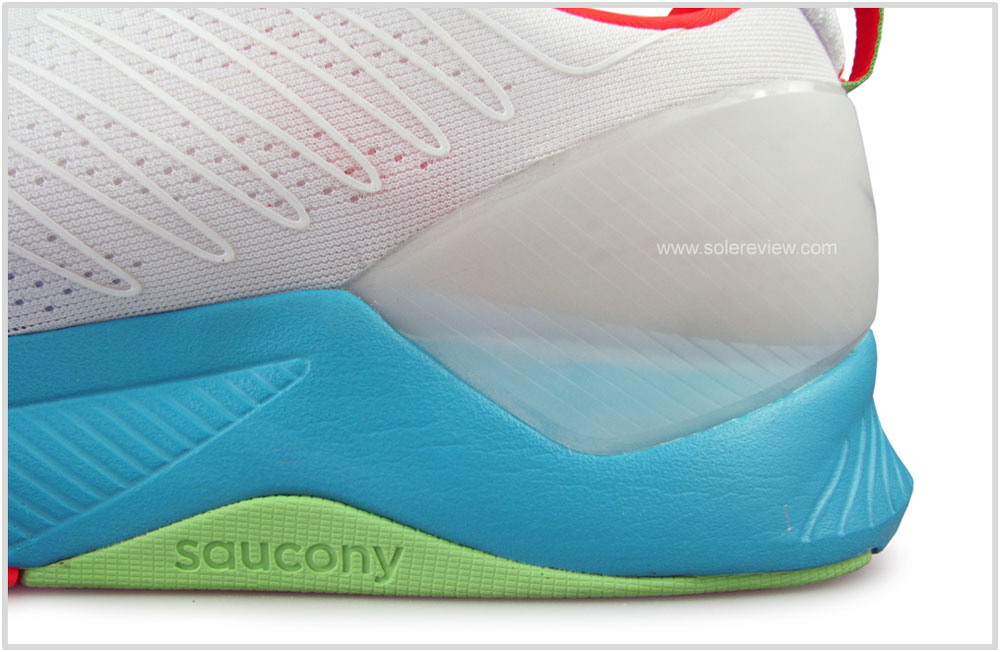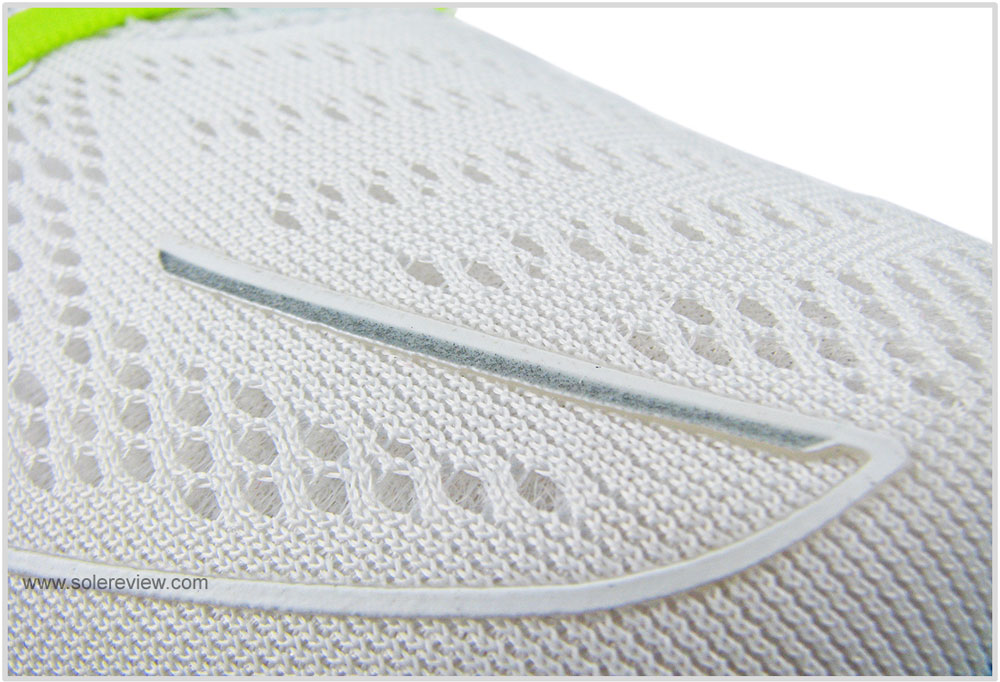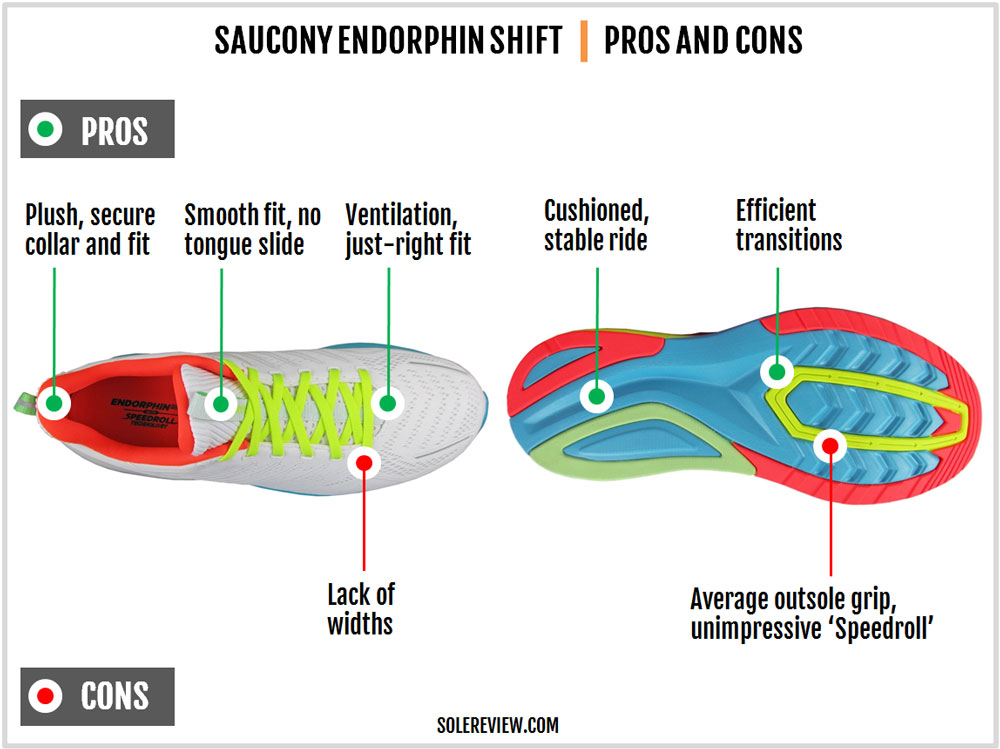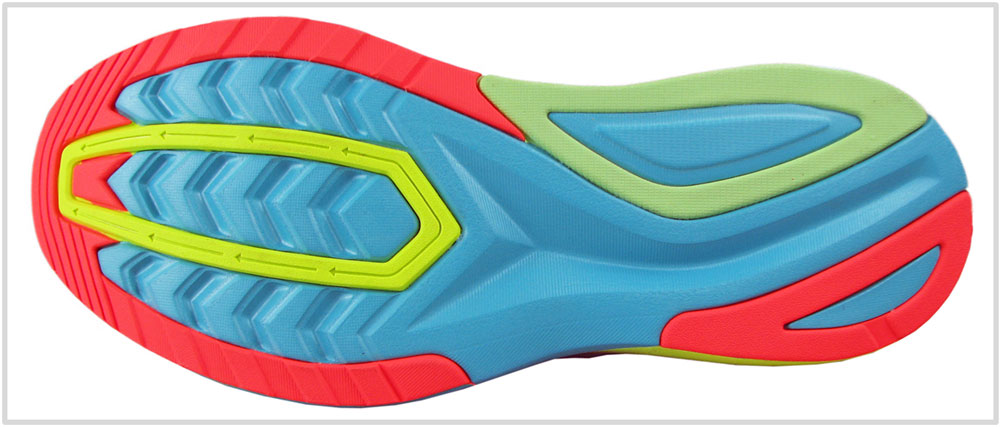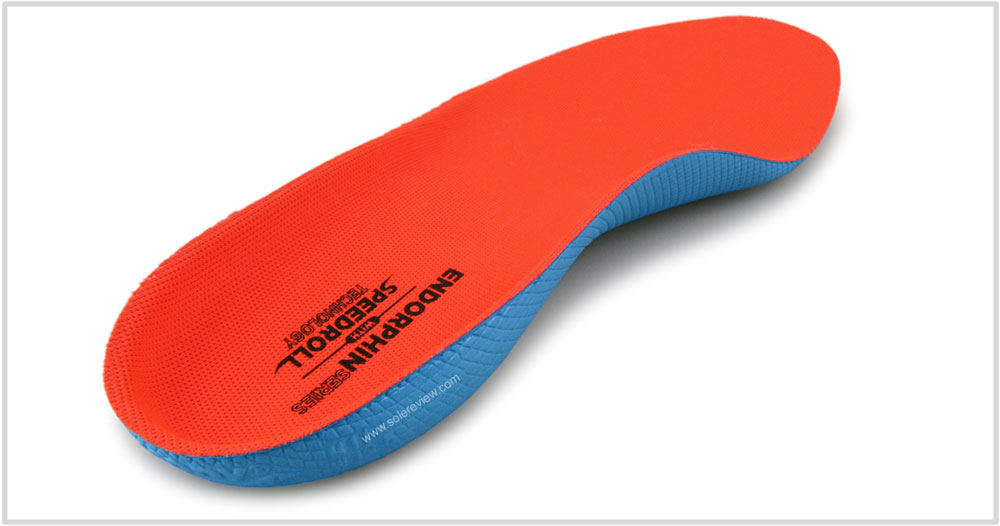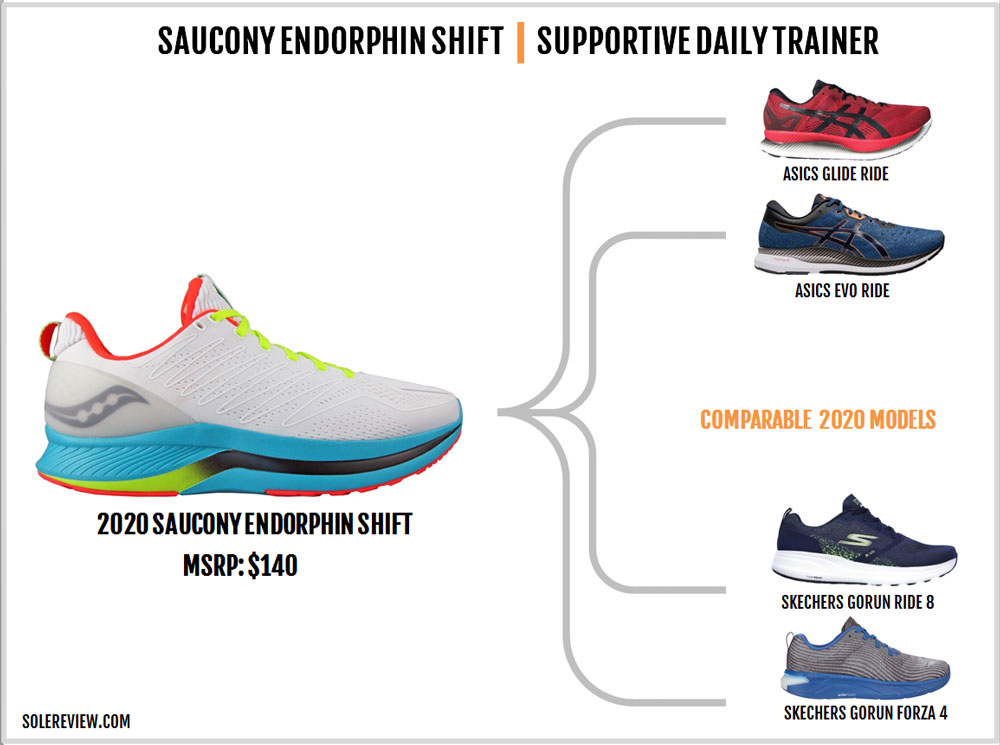INTRODUCTION
The Endorphin Shift is a fitting name for a running shoe.
After all, Endorphins are ‘feel-good’ hormones that are released during a run or a workout. Though Endorphins are released no matter which shoe you run in, naming a shoe after it is a nice touch.
And that’s not the only thing that’s nice about Saucony’s Endorphin assortment – the trio of the Endorphin Pro, Speed, and Shift – with the latter being the most affordable and the subject of this review.
Though we haven’t tested the Pro and Speed yet, internet reviews are positive. The $200 Pro uses a Carbon Fiber plate with a Pebax-based midsole, whereas the Speed has a Pebax midsole and a Nylon plate.
The Endorphin Shift has neither the plate nor the lightweight Pebax foam. It uses PWRRUN foam in a 4 mm heel-to-toe offset; though there’s talk about the foam being a blend of TPU and EVA, it feels and rides like regular compression-molded EVA.
‘Speedroll’ is the common theme that runs through the Endorphin product family, the Shift included. Saucony claims that the midsole promotes quicker roll-offs by using a firm forefoot with a high toe-spring – a form factor that results in a rocker-shaped forefoot.
This isn’t a new concept. Hoka has been doing it for a while, and Asics experimented with it recently – with excellent results. And of course, you have the mighty Nike Vaporfly with its Carbon plate thingy.
We assume that the Endorphin model that truly embodies the Speedroll concept is the Carbon-plated Pro. We haven’t run in the Nylon-plated Speed either, but we can tell you a thing or two about the Endorphin Shift.
So here we are.
THE SOLE DESIGN AND RIDE EXPERIENCE
After a month of ownership and 50 miles later, the following is what we think of the Endorphin Shift’s ride character.
Sure, the forefoot is thick, stiff, and has a high toe-spring – a formula that usually makes forward-rolling transitions a breeze. But then, the Endorphin Shift is a running shoe with only a partial rocker midsole. The heel edge doesn’t have much of a bevel angle.
The way we see it, the E-Shift feels like a cross between the Kinvara 11 and the Ride 13. And of course, with a few tricks uniquely its own. The Kinvara-ness is reflected in the Shift’s heel to toe offset of 4 mm.
On the other hand, the midsole density feels very similar to the Ride 13. And this isn’t a mere coincidence; both shoes share an identical midsole foam that Saucony calls Pwrrun. This is not to be confused with the Triumph 18’s Pwrrun+ (previously Everun) that is based on expanded and fluffy-feeling Polyurethane foam.
And by the way – there is Pwrrun+ on the Shift too, except that Saucony omits to mention it; we wonder why. Remove the molded insole, and you’ll see the ‘topsole’ underneath. This is made of the said e-TPU foam material.
To us, Pwrrun rides like compression-molded EVA. The E-Shift’s midsole has a firm density; just like the Ride 13.
So it’s not soft, neither does the foam possess a bouncy kind of responsiveness. The ‘Topsole’ and the insole combine to create a squishy and mildly responsive layer under the foot, but that’s all there is to the E-Shift’s cushioning softness and bounciness.
And cushioning is there; and how can it not be? After all, the heel and forefoot are 38 mm and 34 mm thick, respectively.
It is just that the cushioning isn’t soft. We assume that both the Speed and Pro versions of the Endorphin run a lot softer due to the Pebax midsole.
But again, given our lack of experience with the Speed and Pro, it is all conjecture at this point.
The night and day difference between the midsole materials of the Shift and Pro/Speed begs the question of whether the Endorphin Shift has more in common with the Kinvara 11 and the Ride 13 than being a close relative of the Endorphin Speed and Pro.
Because coming to think of it, the Shift just looks similar to the higher-priced Endorphin models. And that’s about it. Ok, maybe the upper fits and feel is a close match.
The stability shoe character of the E-Shift is another aspect that merits a discussion. The balanced midsole design and firmness gives the Shift an undeniably neutral ride quality, and yet there’s lots of stability. And that comes not just from the supportive midsole but from the upper too.
The over-sized plastic counter on the upper not only wraps around the heel, but also extends over the inner midsole. The outsole also partially covers the midsole to act as a traditional bridge. Both of these design elements exist only on the Shift within the Endorphin family.
The firm and stable ride of the single-density midsole results in a versatile character.
The kind of versatility that delivers functional performance across a wide range of running paces. Be it easy 10 min/mile (6 min/km) runs or slightly higher speeds (7 min/mile, 4:30 min/km) workouts, the Endorphin Shift proves capable.
Treadmill runs are doable too. Though we usually recommend a lower stack running shoe for runs on a motorized belt, we’ll make an exception here. The solid and supportive ride makes the E-Shift a decent candidate for treadmill sessions.
In essence, the Endorphin Shift is a dependable running shoe that is a good fit for different use-cases. Rotate it as a daily trainer or a long-distance trainer, and you’ll be happy. In the latter case, the 38 mm rear and 34 mm forefoot ensure that the feet do not get punished.
The near-even distribution of the foam stack also allows both rearfoot and forefoot strikers to tap into the Pwrrun+ cushioning. There’s enough midsole and footprint regardless of how one lands. The flared insole also cups the arch, and that’s a nice sensory feeling to have.
We’ve left the most important topic for the last.
That would be the ‘Speedroll’ or the ‘always forward geometry’ that Saucony claims the Endorphin Shift possesses. Now that claim may hold for the fiber-plated Endorphin Pro, but the Shift? Dunno.
Of course, certain things on the Shift translate into smooth transitions. One that feels smooth, efficient, and connected. However, calling this transition – however nice it may be – ‘Speedroll’ is a bit of a stretch.
Or perhaps, Solereview has high standards.
There are so many shoes that nail the ‘always forward’ geometry and ride character. The Asics Glide Ride. The Nike Vaporfly and Zoom Fly. The Mizuno Wave Prophecy and Creation. Compared to them, the Speedroll midsole feels like a lesser version, and lacks the distinct ‘roll-over’ sensation.
All of the examples have two things in common; a hard internal plate and a responsive midsole. The Endorphin Shift has neither. And mind you, a distinct forward-rolling transition is not always because of a stiff plate.
Many running shoes promote forward rolling even with a full-foam design. Several Skechers models with their ‘M-Strike’ design and Hoka One One come to mind. Again, these models had (and have) a ride quality that is more responsive than the Shift.
A forward transition-friendly midsole works best only when paired with a propulsive or responsive midsole foam. This way, forward rolls are not a one-off event, but rather the culmination of a gait cycle taking place over a well-spread layer of bouncy responsiveness.
In contrast, the Endorphin Shift’s Pwrrun foam is rather flat in its cushioning delivery. The midsole material lacks the springiness that encourages a lively, forward-rolling motion.
There’s only so much a thick, inflexible forefoot and a high toe-spring can do.
Our score rates the Endorphin Shift based on its merits without considering the underwhelming Speedroll performance. This is a reliable, cushioned, and supportive running shoe with a balanced ride character and a superlative upper.
On most days, that’s good enough.
Despite its 4 mm heel offset, the E-Shift has a thick stack that bumps its weight beyond 10-ounces. In that vein, getting a lighter and lower-profile running shoe adds rotational value.
The Kinvara 11 matches that description perfectly; this 4 mm drop shoe is versatile, comfortable, and lightweight. And you know our Saucony racing shoe pick – the Type A9, what else?
If you want to explore non-4 mm offset options, may we suggest the Reebok Floatride Energy 2 as your lower profile – and softer shoe? It’s a basic neutral runner that is very functional and well-behaved. You can also choose to swap the Type A9 with the dependable Nike Zoom Streak LT 4.
IS THE SAUCONY ENDORPHIN SHIFT DURABLE?
The stripe that you see on the midsole is painted on, so it will get scratched and flake over time. Also, some minor creasing happens on the foam sidewall.
However, none of these are performance-related concerns. The Pwrrun midsole is very likely to retain its cushioning over several hundred miles; the firm foam doesn’t seem susceptible to compression fatigue.
Unlike most running shoes, the outsole lugs are flush – or at the same level – as the midsole. This spreads the outsole wear evenly, and that bodes well for long-term durability.
Though no wear and tear have been noticed on the upper in our early stages of ownership, we’ll prefer to wait and watch. The forefoot mesh is unlined and is glued to a firm midsole edge. The mesh seems thick and strong enough, but we’ll update this part of the review in case the mesh doesn’t hold up.
And as regards the lacing loops, there’s no reason to worry. Because the back of the lacing panel is reinforced, that’s why.
THE UPPER DESIGN AND FIT
Oh boy. It is really hard to pick faults with the E-Shift’s upper. This is one of the best, if not the best, uppers we’ve reviewed in years. If this shoe was just about the upper, we would have rated it 100%.
There are so many things that the Shift’s upholstery gets right.
We’re still in summer, so the breezy feel of the all-mesh design is the highlight of the upper. Saucony uses an engineered mesh that not only has a generously ventilated upper, but also has a spacer construction.
A spacer mesh is unique in its spongy thickness. The top layer is what you see on the outside, and there’s a dense filament connecting the top mesh to the lining on the inside.
These yarns inside the mesh create a squishy layer that enhances interior comfort. This kind of mesh was commonplace on running shoes a decade ago, but it’s now a rare sight. So it’s great to see Saucony put it to good use on the Endorphin Shift.
Ventilation and comfort are niceties. But what of the forefoot fit?
Here too, the E-Shift’s fabulous upper shines. Though this model lacks optional widths, the proportions are just right. The soft internal bumper dedicates a toe-box space that is neither shallow nor too high. The upper fits true to size.
The sides hug the forefoot without uncomfortable pressure. Though there’s little to no stretch, the ventilated upper never feels constricting. The soft spacer mesh helps too.
Some shoes with non-stretch uppers tend to gather material when laced tight, but the Shift isn’t one of them. The first lacing row has plenty of space between the opposing eyelets, and the flat laces are slightly stretchy. This design helps efficient lacing without the bunching of the mesh.
The soft, flat, and semi-elastic laces are one of the reasons why the top-down pressure isn’t felt. This is worth mentioning here, because the tongue doesn’t have a lot of padding. The flap near the top is foam-quilted and soft to the touch, but the rest of the tongue isn’t.
Instead, the nylon textile that forms the loop extends to the forefoot, and this helps filter the lacing pressure. And yes, there’s a gusset too. It keeps the tongue tethered to the side, and that means there’s no sliding during running.
Though the rest of the interior isn’t sleeved, the tongue edges are not scratchy. There are no seams on the edges – they are raw and rest softly over the foot. The gusset is very thin, so it doesn’t feel like a bump – the interiors are smooth and seamless as they can get.
The lining used for the tongue flap and heel collar is so comfortable, one that makes a world of difference to the overall comfort level. It’s smooth without being slippery; it’s foam-padded without the stuffy feeling. The rear upper of the E-Shift is just perfect.
It also helps that the top part of the heel is soft; this is the part that rests over the Achilles. There’s a heel loop to ease entry into the shoe, and a ribbed structure on the outside makes the collar malleable. The foam fill is just enough for grip and comfort. In other words, the fit is perfect.
There’s a lot of structure in the lower heel though. A molded plastic counter cups the foot and extends partially over the inner midsole, thus acting as a stability device of sorts. However, we felt that was unnecessary due to the firm foam and balanced midsole design. A clip as large as this one just adds excess weight.
Reflectivity is blended thoughtfully into the upper. The heel loop has it, and so does the forefoot. We love how the shiny thin strips flank (see picture below) the toe-box. Elegant, yet functional.
The high-density printed details on the midfoot add a pleasing cosmetic detail while preventing the upper from drooping.
If the gushing praise wasn’t enough hint, here’s our verdict. The Saucony Endorphin Shift’s upper is a masterclass in how to build a lightweight, ventilated, and racer-like upper without sacrificing comfort.
The upper doesn’t feel like a work-in-progress; this is fleshed-out as it gets. Well done, Saucony.
PROS AND CONS
The Endorphin Shift demonstrates that a lightweight upper and comfort can happily co-exist. Be it the fit quality, design, reflectivity, or interior smoothness, the upper lacks nothing. Okay, there are no optional widths, but that’s a brand flaw rather than a shoe thing.
For the most part, the ride feels good. The transitions feel seamless and efficient while there’s plenty of stability due to the firm midsole and the supportive heel. It’s relatively easy to extract versatile performance out of this set-up.
The outsole is set flush into the midsole, so both do not feel like separate components. The forefoot rubber pieces also act as a transition aid. The only – and mild – downside is the passable traction.
The rubber sections do not have lugs per se, so the grip duties are left to the exposed midsole. As with most foam outsoles, the traction is satisfactory but lacks the confident bite of aggressive rubber lugs.
The cushioning isn’t bad either. The insole and the topsole help create a layer of softness just under the foot, and the thick midsole has enough foam for long-distance runs.
And yet – the overall ride is a bit underwhelming. The forefoot roll-off doesn’t happen as quickly as one wants it to. The Pwrrun foam isn’t very responsive, and it feels very similar to the EVA blend that Saucony used on some of its older models.
In short, the Endorphin Shift has a good ride but doesn’t dazzle.
SAUCONY ENDORPHIN SHIFT vs. ENDORPHIN SPEED AND PRO
(First, a disclaimer. We haven’t wear-tested either the Endorphin Speed or the Pro. So this comparison is based purely on paper specs. We guess that’s one of the pitfalls of a review site that purchases its shoes instead of getting it free from the manufacturer. Solereview has to wait for the popular models to restock – just like everybody else. Solereview is in Canada, so shoes are also a bit harder to come by than in the US.)
Apart from the retail pricing distance between each member of the Endorphin family, there are several other differences.
For example, the $20 more expensive Endorphin Speed has a Pebax-based midsole that shaves off a lot of weight. The Speed comes with a Nylon plate too.
The mesh upper without the rigid external counter also makes the E-Speed lighter, but we suspect that the midsole is what makes the shoe lightweight. Pebax has been used in the Nike Vaporfly and Reebok Floatride, so we look forward to testing the Speed and Pro models soon. With the Pwrrun+, Saucony has reworked the e-TPU formula to their advantage, so we’re curious to experience Saucony’s interpretation of the Pebax midsole.
$60 more gets you the Endorphin Pro (when it’s restocked, that is). The upper is racier-looking, and while the midsole is made of the same Pebax foam as the E-Speed.
For the pinnacle product, the headlining act is the Carbon Fiber plate embedded within the midsole. Based on the marketing literature, it seems that the plate’s role is to make transitions and roll-offs faster rather than creating a springboard effect like how the Nike Vaporfly does it.
We’ll update this section when we have actual testing data on the Speed and Pro.
SHOES COMPARABLE TO THE SAUCONY ENDORPHIN SHIFT
It was hard to fill this section, as there aren’t many shoes that compare. And when one narrows it down to a combination of low heel offset and rocker midsole, the options whittle down to nearly nothing.
But, Asics uncharacteristically saves the day with a couple of models. The first is the Asics GlideRide, of course. This is a shoe with noticeable forward-rolling transitions; an internal Nylon plate makes that happen. It is a softer shoe too. The 5 mm heel to toe offset and 9.9-ounce weight also compares with the Endorphin Shift.
The Asics Evoride is a vague match with the Endorphin Shift based on paper specs. There’s no plate, and the basic midsole shape is similar. But there are notable differences – like the dual-density construction, a much thinner stack (22 mm and 17 mm), and a large rubber outsole. The Evoride is an ounce lighter as well.
Skechers has always been a dependable brand when it comes to low offset running shoes with a rocker midsole. So it’s not surprising to see a couple of their models here. A proper stability running shoe can be found in the GoRun Forza 4; its midsole has interlocking firm and hard sections.
The other supportive-neutral alternative is the Skechers GoRun Ride 8. It’s similar to the Shift in the sense that the ride comes from a thick midsole stack ( 33 and 27 mm) molded in a rocker shape. The upper isn’t bad either, and altogether the GRR 8 is a supportive neutral trainer.
Do you own this shoe? Improve this review by sharing your insights – submit a review here.

